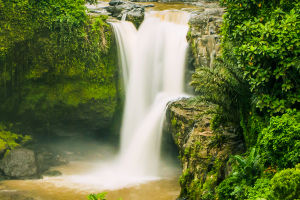Kyoto, an ancient capital of Japan, is often described as the cultural heartland of the country, renowned for its serene temples, elegant traditional streets, and seasonal beauty.
For those planning a visit, three days provide the perfect span to immerse oneself in Kyoto's distinctive atmosphere, balance the famed highlights with hidden treasures, and savor the best the city has to offer.
This comprehensive guide helps plan a seamless trip, offering deep insights and practical information.
How to Get to Kyoto
Kyoto is efficiently connected to Japan's major cities. The most convenient way to reach Kyoto is via the Shinkansen from Tokyo or Osaka. From Tokyo, the journey on the Tokaido Shinkansen takes about 2 hours and 15 minutes; from Osaka, it is a quick 15-minute ride on the same line.
Kansai International Airport (KIX) is the closest international gateway, with direct express trains to Kyoto station in approximately 75 minutes. For travelers using Japan's public transport, prepaid IC cards such as ICOCA are widely accepted on most buses and trains, making travel highly efficient.
Best Time to Visit Kyoto
The prime seasons to experience Kyoto's magic are spring (March to May) and autumn (September to November). Spring is renowned for cherry blossom viewing, with blooms typically peaking between late March and early April.
Autumn, especially from late October through November, brings a vast palette of red and gold as the city's many maples reach their brightest hues. During these periods, the weather is pleasant—averaging highs from 59°F to 75°F (15°C to 24°C) in spring, and 61°F to 72°F (16°C to 22°C) in autumn. These times draw the most visitors, so it is wise to plan and book accommodations early.
Day 1: Historic Kyoto – Higashiyama and Gion
Begin exploration in the atmospheric Higashiyama district. Start at Kiyomizu-dera Temple, a site set on pilings above the hillside with sweeping views over Kyoto. Stroll down Sannenzaka and Ninenzaka, two ancient stone-paved streets lined with quaint tea-houses and craft shops, ideal for souvenir hunting.
Entrance: $3–$4
Next, wander through Maruyama Park, a favorite cherry blossom spot, and continue into the Gion District, famed for its traditional wooden machiya houses and occasional glimpses of geiko (Kyoto's geisha). Late afternoon is the best time for a peaceful walk by the Shirakawa Canal.
Day 2: Arashiyama & Northern Marvels
Journey to Kyoto's western reaches and the scenic Arashiyama district. The first stop is the renowned Arashiyama Bamboo Grove, a mystical stand of towering bamboo—entrance is free. Nearby, the Tenryu-ji Temple features serene Zen gardens—entry about $3.50. For panoramic views, consider a stroll to the Iwatayama Monkey Park (entrance ~$4), home to playful Japanese macaques and a vantage point across the city.
In the afternoon, head north to the Kinkaku-ji (Golden Pavilion), one of Japan's most iconic sites, resplendently covered in gold leaf and surrounded by reflective ponds. The entrance is approximately $3 per person, to be paid in cash. Arrive in the late afternoon to enjoy softer light and thinner crowds.
Day 3: Central Kyoto – Markets, Castles, and Imperial Heritage
Dedicate the final day to Kyoto's vibrant city center. Begin at Nishiki Market, known as "Kyoto's Kitchen," where stalls brim with fresh produce, snacks, pickles, and local street foods. It's a perfect place for sampling Japanese delicacies.
Continue to Nijo Castle, a lavish former residence of shoguns, renowned for its “nightingale floors” and ornate interiors, with an entrance fee around $6–$7. Afterwards, visit the Kyoto Imperial Palace within the Imperial Park, the historic seat of Japan's emperors (entrance to the grounds is free but guided tours may charge a nominal fee).
Top Practical Tips
Accommodation: Lodging ranges from hostels to luxury ryokans (traditional inns). Expect rates from $40 (basic hostel/guesthouse) to $200+ (mid-range to high-end ryokan) per night in high season.
Transport: Buses and subways dominate local transit. The Subway & Bus 1-Day Pass offers unlimited citywide rides for about $7 per day.
Language & Culture: English signage is common at tourist sites, but polite greetings and basic Japanese phrases are appreciated.
Dress and Etiquette: Modesty is respected, especially at shrines and temples. Shoes must be removed before entering many sites.
Attractions Worth Considering (Time Permitting)
Fushimi Inari Taisha: Famous for its avenue of 10,000 vermillion torii gates. Entrance is free, but arriving early helps avoid heavy crowds.
Philosopher's Path: A tranquil canal-side walk between Nanzen-ji and Ginkaku-ji (Silver Pavilion), especially beautiful during cherry blossom season.
Embark on a transformative journey through Kyoto's timeless streets, where every temple, garden, and market reveals a new story—promising an unforgettable adventure that perfectly balances history, culture, and natural beauty in just three days!


